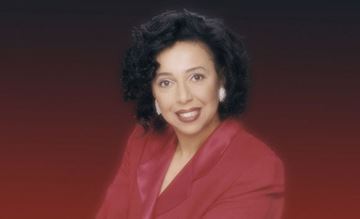
Photo/COURTESY Etobicoke Guardian
Each February, Torontonians celebrate Black History Month to remember, honour and preserve a rich part of the city’s history.
However, there was a time when black history wasn’t officially celebrated or recognized in Toronto.
It wasn’t until February 1996 when Ontario, and all of Canada, first officially recognized February as Black History Month. This happened through the efforts of many people, including Rosemary Sadlier from Bloor West Village and MP Jean Augustine (Etobicoke-Lakeshore).
Sadlier was successful in initiating a provincial proclamation for February as Black History Month that officially passed in December 1995. Then she approached the federal government to pursue having it nationally recognized.
“The first time Black History Month was officially declared and celebrated in this country was Feb. 19, 1996 through the efforts of the Ontario Black History Society,” she said.
Sadlier, (former) president of the Ontario Black History Society (OBHS), said it was long overdue. Americans have recognized black history since 1926, first as Negro History Week and later as Black History Month.
Sadlier said although it was celebrated within the black community in Toronto for 30 years before 1996, having it officially declared was a milestone.
There are many reasons to celebrate black history, she said, beyond building pride and identity formation.
“It’s also for the wider community, she said. “How do you understand who your neighbours are, your colleagues or maybe family members might be if you don’t have some sense of what it is that they’ve done and contributed to the development of this country?”
The society is a registered Canadian charity dedicated to the study, preservation and promotion of black history in Ontario. Since 1978, the group has been instrumental in helping to promote black history, which spans beyond Toronto and Ontario.
“We also have people in Toronto who have connections to the Maritimes and the Caribbean … Europe and South America, so when you tell the story of the people who are here, you are telling the story of people who reflect the whole world,” Sadlier said.
As with all history, it’s important to keep educating people, especially youth, Sadlier said. By looking back at their history and its key players, it’s not just purposeful reflection but also a way to prepare for the future.
“You look at what worked, what was positive, what was useful and helpful and what are the deficits so then we can make some determinations going forward and what we can improve,” she said.
Blacks, past and present, also serve as role models to youth. Learning about the contributions and achievements of black people gives youth a sense of community, pride and equity, she said.
Sadlier said there were many significant contributions made by early black Torontonians that youth can look up to. People like Mary Ann Shad Cary, Canada’s first woman newspaper editor and publisher of her own anti-slavery newspaper, The Provincial Freeman, and William Peyton Hubbard, Toronto’s first and only black mayor.
But Black History Month is also about celebration living heroes such as Stanley G. Grizzle, a retired citizenship court judge and a labour union activist who helped to advocate important changes to Canada’s immigration laws.
“In many ways he still guides the process today and he still lives in downtown Toronto,” she said.
Sadlier said she feels there’s not enough black history education in our schools and said she would like it to be part of the regular school curriculum.
“We tend not to have black history courses (but) because of funding cuts, and if they were never really made a part of the history curriculum’s required courses, they are easily trimmed when there are issues with budget.”
And what is taught or celebrated, Sadlier said, is often concentrated on a few ‘larger-than-life’ figures when the scope of the history is so much bigger.
“The reality is there are and have been many people in many locations over many years who have done things that have contributed as well,” she said.
While she said she is happy there are so many black history events happening in Toronto, Sadlier said the scope of history is far too great to cram it into one month of celebration.
What’s truly needed is ongoing education, she said. Ideally, Sadlier would like to have something more mainstay in Toronto, like a cultural centre for black studies, history and culture.
Visit http://www.blackhistoryottawa.org for info on the 2017 Ottawa Black History Months events.
Source: InsideToronto.com. Reproduced from Jan 21, 2015.

